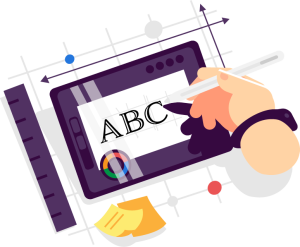Table of Contents
What Are Hashtags (#)
Hashtags are words or phrases that are preceded by the pound or hash symbol (#) on social media platforms such as Twitter, Instagram, Facebook, and LinkedIn. They are used to categorize content and make it easier to discover content related to specific topics or interests.
Hashtags enable users to search for and find content related to a particular topic by clicking on or searching for the relevant hashtag. When a user includes a hashtag in their post, it becomes a clickable link that takes users to a feed of all other posts that include the same hashtag.
For example, if someone posts a photo of a sunset on Instagram and includes the hashtag #sunset, other Instagram users who are interested in sunsets can find the post by clicking on or searching for the #sunset hashtag.
Hashtags can be used to join conversations, increase visibility, and build communities around particular topics or interests. By using relevant hashtags, users can help their content reach a wider audience and connect with other users who share similar interests.
Why Using Hashtags
Hashtags are a powerful tool for social media users for a variety of reasons:
1. Categorize Content
Hashtags allow users to categorize their content by topic, making it easier for other users to discover content that is relevant to their interests.
2. Increase Visibility
Hashtags can increase the visibility of posts by making them more discoverable to a wider audience. Users can search for and follow specific hashtags to stay up-to-date on topics or events that interest them.
3. Joining Conversations
Hashtags can be used to join conversations around specific topics or events. By including a relevant hashtag in a post, users can connect with others who are interested in the same topic and engage in conversations.
4. Building Communities
Hashtags can be used to build communities around specific topics or interests. By using a branded hashtag, users can create a community of followers who are interested in their content and brand.
5. Marketing & Promotion
Hashtags can be used for marketing and promotional purposes, such as promoting a product or service. Businesses can use hashtags to reach a wider audience and increase engagement with their target market.

How To Choose The Right Hashtags
Choosing the right hashtags is crucial to make your content discoverable, reaching a wider audience, and ultimately growing your following on social media platforms.
Here are some tips on how to choose the right hashtags for your posts:
1. Be Specific
Use specific hashtags that are relevant to your post rather than generic ones. Specific hashtags are more likely to attract an engaged audience who are interested in your content.
2. Check The Competition
Look at the hashtags that your competitors or industry leaders are using and see if they fit with your content.
3. Use A Mix Of Hashtags
Use a mix of broad and niche-specific hashtags in your posts. Broad hashtags may have a larger reach, but they also have more competition, while niche-specific hashtags can help you reach a more targeted audience.
4. Use Branded Hashtags
If you have a brand or business, create a branded hashtag that is unique to your brand and use it consistently in your posts.
5. Use Trending Hashtags
Keep an eye on trending hashtags and jump on opportunities to join relevant conversations and increase your visibility.
6. Stay Relevant
Only use hashtags that are relevant to your post. Using irrelevant hashtags can make your content look spammy and may turn off potential followers.
Here are some ways to find relevant hashtags for your social media posts:
Use social media search: Type in keywords related to your post in the search bar of the social media platform you’re using. The platform will show you popular and related hashtags that you can use.
Use hashtag generator tools: There are many online tools and apps that can help you generate hashtags based on your content or target audience. Some popular ones include Hashtagify, RiteTag, and Tagboard.
Check out what your competitors are using: Look at the hashtags that your competitors are using in their posts and see if they are relevant to your content.
Check out what’s trending: Keep an eye on trending topics and hashtags on social media platforms and see if they are relevant to your content.
Use Google: You can use Google to search for popular hashtags related to your niche or industry. For example, if you’re a food blogger, you can search for “popular food hashtags” or “food hashtags for Instagram.”
Follow influencers in your niche: Follow influencers in your niche or industry and see what hashtags they are using in their posts.
Use location-based hashtags: If your content is location-specific, use location-based hashtags to reach a local audience.
Remember, it’s important to choose hashtags that are relevant to your content and target audience. Using the right hashtags can increase your reach, engagement, and ultimately help you grow your following on social media.


How To Organize Hashtags
Organizing hashtags can help you keep track of which ones you’ve used and which ones are most effective for your content. It can help you stay organized and maximize the impact of your social media posts. By using relevant hashtags and analyzing your results, you can grow your following and increase your engagement on social media.
Here are some tips for organizing hashtags:
1. Create Categories
Create categories of hashtags that are relevant to your content or target audience. For example, you might have categories for food, travel, or fashion.
2. Use A Spreadsheet
Use a spreadsheet to keep track of your hashtags. You can create columns for the hashtag, category, and any notes or comments about how well the hashtag performed.
3. Use A Social Media Management Tool
There are many online tools and apps that can help you manage your hashtags. Some popular ones include Later, Hootsuite, and Sprout Social.
4. Review & Update
Review your hashtag strategy regularly to see which hashtags are working for you and which ones are not. Update your list of hashtags as needed to keep it current and effective.
Conclusion
Hashtags can be a powerful tool for businesses on social media. Here are some ways that hashtags can benefit your business:
Increase visibility: Using relevant hashtags can help your content appear in search results and increase your visibility on social media.
Reach new audiences: Hashtags can help you reach new audiences who are searching for content related to your industry or niche.
Build brand awareness: Using consistent hashtags can help you build brand awareness and create a cohesive brand across all of your social media platforms.
Join conversations: Using relevant hashtags can help you join conversations and engage with your target audience on social media.
Promote campaigns and events: Using branded hashtags can help you promote campaigns, events, and other initiatives on social media.
Analyze performance: By analyzing the performance of your hashtags using social media analytics tools, you can see which hashtags are working for you and adjust your strategy accordingly.
Remember, using hashtags for business on social media requires careful planning and strategy. By using relevant and consistent hashtags, you can increase your visibility, reach new audiences, and build brand awareness on social media.





